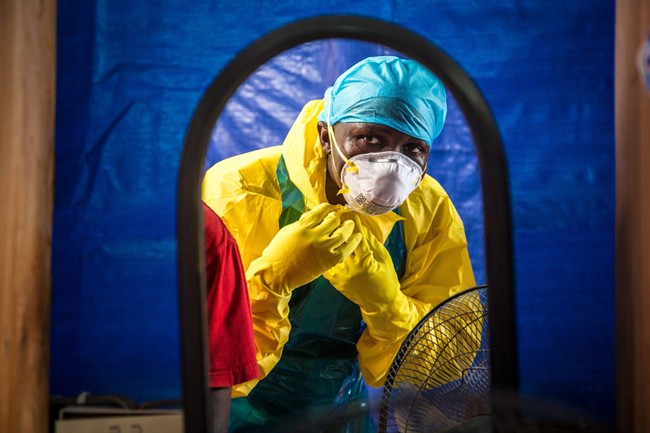While global health officials are still trying to tame the Ebola outbreak in West Africa, scientists said the deadly disease may have paved the way for a measles epidemic.

Liberia, Guinea and Sierra Leone are particularly at risk. That’s because these Ebola-ravaged nations saw their health care systems on their knees at the height of the Ebola outbreak. Routine vaccinations were pushed aside and the public feared taking their kids to clinics and hospitals.
Princeton University and Johns Hopkins University scientists warn that West Africa could see cases of measles nearly double from 127,000 cases to 227,000. An estimated 2,000 to 16,000 deaths due to measles could be a part of the fallout of the months-long Ebola epidemic.
Between 2004 and 2013, the three countries reported only 6,937 measles cases.
Keep in mind, the health care system in the poverty-stricken regions was already shaky. The World Health Organization said this week that the death toll from Ebola surpassed 10,000 with another 24,000 people infected.
READ MORE: UN tally of Ebola deaths passes 10,000, most in West Africa
Humanitarian workers told the media about lack of resources and the public’s mistrust in government and global intervention.
“Measles tends to follow humanitarian cases,” according to co-author Dr. Jessica Metcalf, a Princeton University assistant professor.
Take the Philippines as a prime example: a measles epidemic followed Typhoon Haiyan in 2013. There were more than 58,000 cases of the highly contagious virus – and it migrated around the world from there.
- Shoppers faces proposed class action over claims company is ‘abusive’ to pharmacists
- Most Canadian youth visit dentists, but lack of insurance a barrier
- ‘Bacterial vampirism’: Deadly pathogens attracted to human blood, study finds
- Budget 2024: Liberals look to offset drug plan cost with higher smoking, vaping taxes
READ MORE: How does Ebola spread? 5 things you need to know
“Our work is significant in that it describes the scope of the measles susceptibility problem in Ebola-affected regions. Ideally, this will aid governments and nongovernmental organizations to focus their resources on restarting vaccination programs,” she explained.
Measles vaccination wasn’t the only routine procedure that took a hit – polio inoculations, and treatment for AIDS and malaria also suffered as health officials shifted their efforts on containing Ebola.
READ MORE: Why health officials say the Ebola epidemic won’t spread into Canada
The researchers said they hope their findings remind decision-makers to keep an eye on other diseases before they, too, get out of hand. This is critical in countries with precarious health care infrastructures.
“We have to be cognizant of these external events socking weak or fragile health systems and having these other consequences,” Dr. Saad Omer, an Emory University professor, said in a statement.
READ MORE: Why is measles so contagious? 5 things you need to know
“If you have actual numbers, people tend to pay a lot more attention. This paper will help make the situation a little bit more real for a lot of people,” he said.
The team’s full findings were published Thursday night in the journal Science.
carmen.chai@globalnews.ca
Follow @Carmen_Chai




Comments